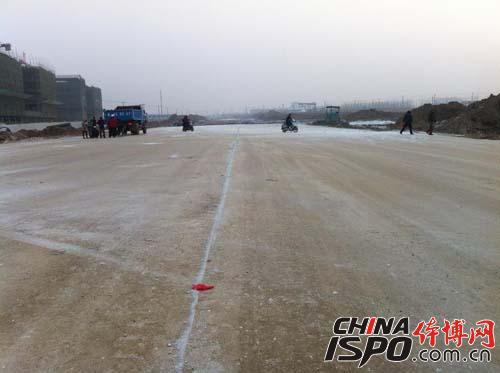The ground floor is constructed using gravel, which is formed by interlocking and embedding corners to create a stable structural layer. Due to the nature of this composition, the paving process must be done manually. It is strictly prohibited to use earth-moving machines or graders for laying the gravel, as this could round the stones and compromise their interlocking strength.

When laying the gravel layer, it's important to apply a virtual thickness rather than making multiple adjustments later. This virtual thickness is determined through testing, typically calculated as 1.45 times the designed thickness when using manual methods. The gravel should be evenly distributed, with consistent thickness throughout. From the start of the work, all vehicles must be kept off the surface to ensure the cleanliness and integrity of the layer.
Once the gravel is leveled, water should be sprinkled heavily before starting the rolling process. A light drum roller should be used initially, moving slowly from lower to higher areas. Each pass should overlap properly—typically half the width of the rear wheel for three-wheel rollers, and at least 30 cm for other types.
First, a 6–8 ton roller is used to compact the area, maintaining a speed of 25–30 meters per minute, and rolling 4–6 times. Any low spots should be inspected and repaired, while high areas need to be broken up and recompacted with heavier rollers. For this stage, a roller weighing more than 12 tons is recommended, and vibration should be avoided. The rolling speed should be increased to 30–35 meters per minute, with water applied sparingly—no more than 1000 grams per square meter—and rolled 6–10 times.
After the gravel has been compacted smoothly and firmly, another layer of water is sprayed, followed by the application of 15–25 mm filler material. As the filler is rolled, water should be splashed every 2–3 passes, again keeping the water usage under 1000 grams per square meter. The compaction of the filler should be done with a heavy-duty roller weighing over 12 tons, traveling at 40–50 meters per minute. The number of passes should be limited to avoid over-compaction, and the roller tracks should not exceed 5 mm in depth.
Hyperbaric Chamber

Medical hyperbaric oxygen chambers are usually large in size and require professional medical personnel to operate, requiring high levels of professionalism. Modern people are increasingly pursuing quality of life and focusing on health preservation. Therefore, home hyperbaric oxygen chambers have emerged, which are more user-friendly.
The shell of DOING Hyperbaric Oxygen Chamber comes in two types: soft TPU material and hard stainless steel material, which can be selected according to personal preferences.
DOING has independently developed sleeping hyperbaric chambers, sitting hyperbaric chambers, and spherical hyperbaric chambers for users to choose from.
The production of DOING hyperbaric oxygen chambers has undergone layers of inspection to ensure reliable quality and reassure users.
The two transparent observation windows and dual pressure reducing valve design of DOING hyperbaric oxygen chamber greatly improve the safety of use.
The hyperbaric oxygen chamber developed by DOING has a mature and stable control system, which can display real-time values such as PM2.5, temperature, oxygen concentration, and negative ion parameters.
Soft Home Hyperbaric Chamber,Soft Pressure Oxygen Chamber,Soft Oxygen Recovery Chamber,Soft Hyperbaric Healing Chamber
Danyang Doing Articles Co.,Ltd , https://www.dydoing.com
